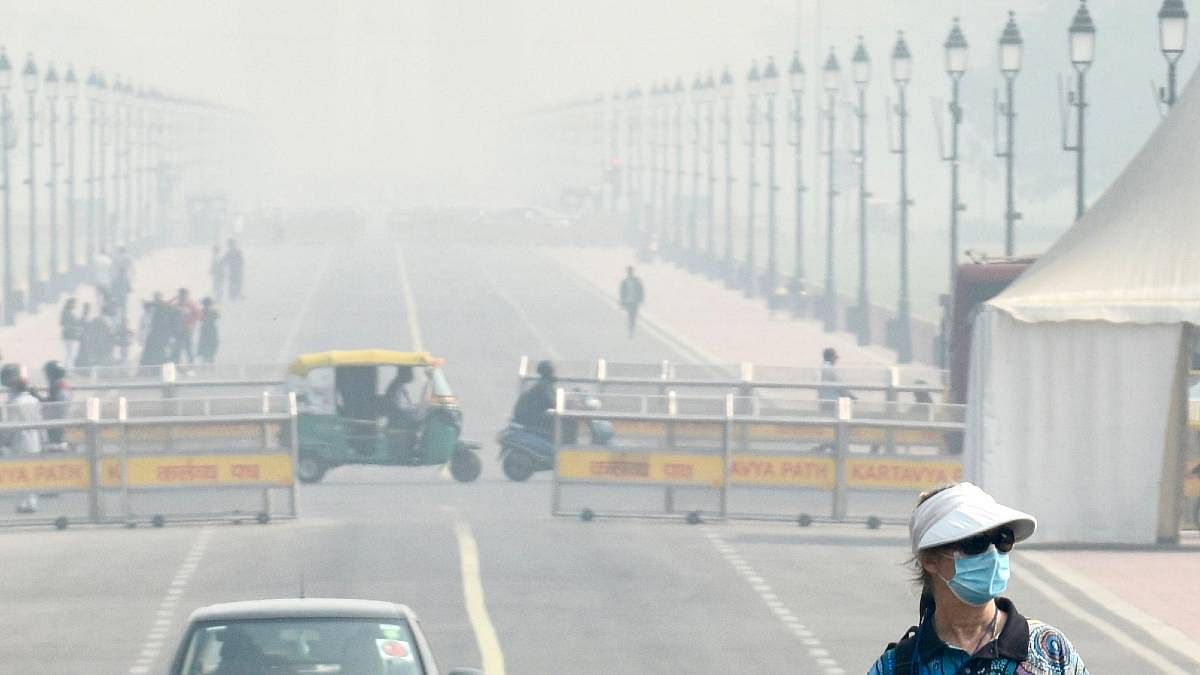New Delhi: The thick layer of smog in New Delhi and nearby areas is blocking ultraviolet rays, and this can impact Vitamin D levels in the population, according to Dr R. Goswami, professor of endocrinology at AIIMS.
Goswami, speaking to the media in the Capital Wednesday, highlighted the general lack of awareness among people about the importance of Vitamin D in the healthy functioning of the human body.
He said that initially people were unaware of the health effects of Vitamin D deficiency, then there came a phase when people became “hyper-aware” and decided to take injections for fighting the deficiency.
In the hour-long conversation, Goswami further explained the ways through which Vitamin D can be maintained in the body, the need for supplements where people do not have access to regular sunlight, and the connection between Vitamin D and calcium deficiency.
The doctor spoke about the long-term impact of Vitamin D deficiency, noting that several illnesses including osteoporosis, a disease that causes bones to become weak, can be traced to it. Prolonged deficiency may also lead to a hunched back, vertebral fractures, bone pain and height loss in adulthood, as well as dental decay. In pregnant women, it may lead to low birth weight of the child.
Vitamin D functions like a hormone, is produced naturally in the body and plays a crucial role in maintaining healthy bones and teeth. The vitamin has two forms: D3, which is produced endogenously through sun exposure, and D2, which comes from plant sources.
Vitamin D deficiency is diagnosed when blood levels fall below 12 ng/ml. Levels above 12 ng/ml are generally sufficient if calcium intake is adequate.
Dr Goswami emphasised that “sunshine exposure” is the best way to get Vitamin D. “Spending 15-30 minutes in the sun between 10 am and 2 pm with 15 percent of your body exposed can be highly beneficial,” he said.
He also clarified the distinction between sunlight and sunshine exposure, noting that sitting in a glass-enclosed space is ineffective since glass blocks UV rays. Direct exposure is essential. Additionally, he pointed out that sunscreens with high SPF can hinder Vitamin D production.
“The more sunscreen you apply, the greater the blockage. For instance, sunscreen with an SPF of 50 virtually blocks all absorption,” he explained.
Fatty fish like salmon and cod and eggs provide Vitamin D, but in minimal amounts, making it challenging to meet daily requirements through diet alone.
According to Dr Goswami, rapid urbanisation and indoor jobs often limit sun exposure, making supplements like cholecalciferol (D3) a practical and affordable option. “Cholecalciferol is safely converted into its active form in the body in controlled amounts, minimising the risk of toxicity,” he said. One sachet per month is sufficient and should be taken directly, he added.
Also Read: Taking too many supplements can give you vitamin toxicity. Focus on diet instead
Vitamin D and calcium
Dr Goswami explained that Vitamin D and calcium are interlinked. Vitamin D plays a crucial role in forming calcium transporters in the gut, enabling the absorption of dietary calcium. Without adequate Vitamin D, only a limited amount of calcium can be absorbed, affecting bone mineralisation.
When Vitamin D levels are insufficient, the body adapts by increasing parathyroid hormone production, which helps regulate calcium levels. Around 90 percent of Vitamin D comes from sunlight (D3), while dietary sources like eggs, liver and cheese contribute only about 10 percent, he said.
“If you’re Vitamin D deficient but have sufficient calcium, you may avoid the symptoms of Vitamin D deficiency, as 15 percent of calcium can still be absorbed. However, if you’re deficient in both Vitamin D and calcium, you’re at risk for symptoms of calcium deficiency, including muscle weakness, chronic back pain, cramps, and in severe cases, convulsions,” he added.
(Edited by Nida Fatima Siddiqui)
Also Read: Taking too many supplements can give you vitamin toxicity. Focus on diet instead

